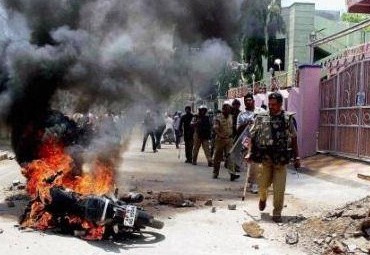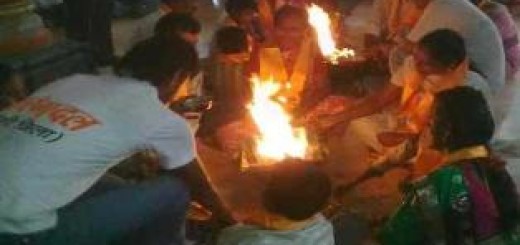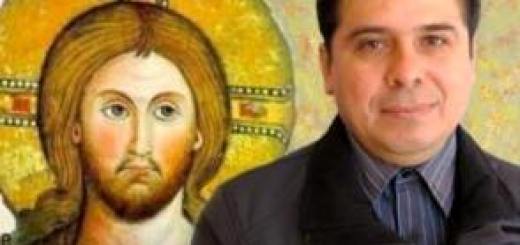India’s deepening communal cleavages

On December 1, Niranjan Jyoti, a member of India’s ruling Bharatiya Janata Party (BJP) and a federal government minister, gave a speech at a state election campaign rally in New Delhi. Voters, she declared, faced a choice. Did they want a state government led by “the children of Ram or bastard children”?
Ram is a revered Hindu deity. The implication was that the “bastard children” are non-Hindus.
Such inflammatory remarks are not unusual in India. The country is blessed with rich ethnic and religious diversity but has long been cursed by communal tensions—which occasionally explode into horrific violence. The most notorious examples include anti-Muslim riots in Gujarat in 2002; countrywide India-Muslim bloodshed in 1992 after Hindu zealots destroyed the Babri mosque in Uttar Pradesh; and anti-Sikh massacres across India in 1984 following the assassination of Prime Minister Indira Gandhi, who was killed by two Sikh bodyguards.
Unfortunately, as I learned during a recent two-week, six-city visit to India, there are indications that India’s communal troubles are intensifying—and some of the Indians with whom I spoke faulted the country’s new government. The BJP, which won the 2014 national elections in a landslide, is a Hindu nationalist party with ties to right-wing militant Hindu groups.
During the trip, I spoke with academics, analysts, journalists, university students, and common Indians. Many people with whom I met expressed lukewarm sentiments at best toward Prime Minister Narendra Modi, who was swept into power by a mammoth margin. Such views are at odds with Western media reports that depict him as wildly popular.
Some criticized him for not being smart; others rejected his oft-recounted rags-to-riches story (he was no tea seller, groused a journalist, he was a tea seller’s middle man). And many of my interlocutors worried that Modi, even if indirectly, will worsen India’s communal tensions. They suggested that hardline nationalists, emboldened by Modi’s resounding victory, will be more inflammatory in their rhetoric and more assertive in their activities (Christine Fair offered her own take on Modi in a September War on the Rocks piece).
“This Doesn’t Happen Here”
When I was in New Delhi, locals were buzzing about a slum community in the city’s eastern parts called Trilokpuri. There, for several days, Hindus had been clashing violently with Muslims. Though the unrest was relatively modest—mainly restricted to brick-throwing and shop-torching—the city was still alarmed. Everyone I spoke to in Delhi about the clashes said the same thing: “This doesn’t happen here.” Not since anti-Sikh bloodshed in 1984, I was told, had the city experienced such serious communal conflict.
Several days later, while sitting in the departure lounge of the airport in Patna—the capital of Bihar, where last year suspected Islamist terrorists detonated bombs at a BJP campaign rally—I struck up a conversation with someone about religious violence occurring hundreds of miles south in a small village in Bastar, a region in Chhattisgarh. In September, minority Christians were attacked while praying in their church—and then again, several weeks later, while they were gathered in the church waiting to meet with a police officer about the attack. Bastar is no stranger to violence; Chhattisgarh is a bastion for Maoist rebels waging an anti-state insurgency. Religious violence there, however, is highly unusual.
Ascent of the Hindu Nationalists
There is another dimension to this story. In the interval between the two attacks, a BJP parliamentarian from Bastar suddenly arrived in the village, washed the feet of 35 Christians, and proclaimed them converts to Hinduism (perhaps fearing for their safety, these villagers have said little about what they think of the “conversions”). He had been invited by Vishwa Hindu Parishad, a Hindu nationalist group (200 Muslims would be converted in a similar ceremony elsewhere in India in early December). Locals report that in recent months, members of Vishwa Hindu Parishad and its militant youth wing, Bajrang Dal, have been making more frequent visits to Bastar.
The growing presence of these groups in Bastar isn’t surprising. Since Modi took office, hardline Hindu nationalists have intensified their activities nationwide. This past summer, a BJP parliamentarian in Uttar Pradesh used media appearances and other public forums to help elevate to prominence what had previously been a relatively obscure campaign to scare Hindu women into thinking Muslim men, through a “love jihad,” want to seduce and convert them.
Other strategies are less sophisticated and conspiratorial. Just before I arrived in India, nearly two dozen thugs ransacked a café in Kerala because it was patronized by kissing young couples. According to police sources, these vigilantes of virtue were members of the BJP’s youth wing.. These activists appeared to be acting on behalf of the conservative Hindu ideology known as Hindutva, which denounces public kissing as anti-Hindu.
In some cases, the government has provided Hindu fundamentalists with a direct platform. In October, for the first time ever, India’s only state-run television channel broadcasted live a major annual speech by the head of RSS, India’s largest radical Hindu nationalist group.
To be sure, these activists’ efforts haven’t exactly engendered mass public support (the Kerala café attack spawned a nationwide “Kiss of Love” campaign in which young people defiantly kiss each other in public). Still, in a socially conservative country like India, these far-right efforts will resonate with many people. In recent weeks, village elders, anonymous pamphlets, and various Hindu activists have warned of Muslims’ nefarious designs on Hindu women.
Triggers for Heightened Communal Tensions
India’s communal strife affects many groups—from foreign menial laborers and low-caste dalits to the Hindu majority and Muslim and Christian minorities. Hindu-Muslim tensions, however, are particularly common—and they could be further aggravated if, as is quite possible, jihadist terrorists strike India in the months ahead.
Indian security analysts with whom I spoke fear an influx of Pakistani militants from the west, and—a threat that garners little coverage in the international press—infusions of Bangladeshi radicals from the east. During my trip, there was intense local media reportage of an investigation into a terror cell in the eastern state of West Bengal. Indians are also concerned about the intentions of al Qaeda’s new South Asia affiliate, which clearly has India in its crosshairs (its leader, who I wrote about previously for War on the Rocks, has long ranted about India and called on its Muslims to mobilize for jihad).
To this point, Modi has distanced himself from the inflammatory views some of his party colleagues have expressed toward Muslims. If India is hit by Islamist terror, however, Modi would likely not be as restrained—and with the prime minister on the offensive, Hindu-Muslim tensions could skyrocket.
Another potential trigger for heightened communal tensions is economic malaise. Modi was elected with a huge mandate to fix India’s floundering economy. Many Indians hope he can replicate the economic success stories of Gujarat, where he was previously chief minister, across India on the whole.
However, these are unreasonable expectations. To think that Modi can take the reform-through-liberalization-and-modernization model used in a single state (and one with a long-established entrepreneurial class at that) and apply it across a nation burdened by underdevelopment and deeply embedded corruption, is breathtakingly optimistic. Still, if voters don’t see results, they could quickly grow restless—and prompt Modi to fall back on a Hindu nationalist program to appease and reassure his base. In his short time as premier, he has subordinated this program to economic and foreign policy priorities.
A Necessary Reality Check
Some perspective is in order. India’s communal tensions are not nearly as severe as those of, say, Iraq or Pakistan. When I was in India, Pakistan suffered two horrifying incidents in the same week—a mob beat a Christian couple to death and burned their bodies, while a policeman bludgeoned a Shia Muslim to death with an axe. Such witheringly brutal acts of religious violence occur with less frequency in India.
I was in Kolkata during the Islamic month of Muharram, when Shia Muslims hold processions to mourn the death of the Prophet Muhammad’s grandson Hussein. In some countries, Muharram is a particularly bloody time. This year, Iraq was hit by multiple bombings targeting Shias. India, however, was relatively quiet. In Kolkata—where Muslims constitute about 20 percent of the population—the only noise I heard was the incessant honking of motorists. They were irate about the traffic jams resulting from the closure of city streets to allow Muharram processions to take place.
A Historian’s Ominous Words
Still, there is considerable cause for concern. In an op-ed published during the Trilokpuri riots, Indian historian Mukil Kesavan warned that history shows how communal violence in India “is closely connected with turning points in high politics.” There’s no reason, he wrote, to believe the BJP orchestrated the Trilokpuri violence. However, emboldened individual Hindu activists “could be testing the waters, testing precedent, testing the limits of the politically possible” following the election victory of one of their own.
It is thoughts like these that likely made some of the Indians I spoke with so concerned about Modi—and about what his election triumph could mean for the country’s volatile communal landscape.
Meanwhile, Naranjan Jyoti continues to speak at election rallies, including two on December 8.
One was in Trilokpuri.
(Michael Kugelman is the senior associate for South Asia with the Woodrow Wilson International Center for Scholars. He can be reached at michael.kugelman@wilsoncenter.org
















